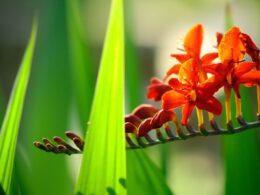Are you new to gardening and wondering whether you should put topsoil over compost? Composting is a fantastic way to enrich your soil, and topsoil can also provide several benefits. However, there are both pros and cons to adding topsoil over compost, and it’s important to understand these before making a decision.
Composting is a natural process that turns organic waste into nutrient-rich soil for your plants. It’s an excellent way to reduce waste and improve soil health, and it’s easy to do at home.
However, if you want to take your gardening to the next level, you may be wondering whether you should add topsoil over your compost. Topsoil is the uppermost layer of soil, and it contains essential nutrients that can help your plants thrive.
In this article, we’ll explore the benefits and drawbacks of adding topsoil over compost, and we’ll provide you with the information you need to make an informed decision.
The Benefits of Composting
Composting has many benefits, including enriching soil fertility and promoting healthy plant growth. If you’re looking for a way to improve your garden, composting is a great place to start.
Compost is organic material that has undergone a natural process of decomposition. It’s made up of things like food scraps, yard waste, and other organic matter. Using compost for gardening can help to improve soil structure. It can also help to retain moisture in the soil, which is important for healthy plant growth.
Compost is also rich in nutrients that plants need, like nitrogen, phosphorus, and potassium. When you add compost to your soil, you’re giving your plants the nutrients they need to thrive. The composting process is simple. All you need to do is collect your organic waste and add it to a compost bin or heap.
Over time, the organic material will break down into a rich, dark substance that can be used to fertilize your garden. The process can take anywhere from a few months to a year, depending on the conditions. But with a little patience, you can create a nutrient-rich compost that will help your plants to grow strong and healthy.
Understanding Topsoil
If you’re interested in gardening or landscaping, it’s important to understand what topsoil is. Topsoil is the uppermost layer of soil, typically ranging from 2-8 inches thick, that contains the most organic matter and nutrients.
There are different types of topsoil, including loam, clay, and sandy soil, each with their own unique characteristics. By using topsoil, you can improve the quality of your soil, promote healthy plant growth, and increase the overall aesthetic appeal of your outdoor space.
What is Topsoil?
You may be surprised to learn that topsoil is a crucial component for healthy plant growth. Topsoil is the uppermost layer of soil on the earth’s surface, and it contains the highest concentration of organic matter, nutrients, and microorganisms.
The composition of topsoil is made up of a mixture of sand, silt, and clay particles, along with decaying plant matter, and other organic materials that have accumulated over time.
Topsoil differs from subsoil, which is the layer of soil located directly beneath the topsoil. Subsoil is typically less fertile than topsoil and contains less organic matter.
This is why it’s essential to have a layer of topsoil when planting any vegetation. By adding topsoil to your garden or lawn, you can ensure that your plants will have access to the necessary nutrients, moisture retention, and root growth they need to grow and thrive.
Types of Topsoil
Let’s explore the different types of topsoil available to enhance the health and vibrancy of your plants! When it comes to soil composition, topsoil is the uppermost layer of soil that’s rich in nutrients and organic matter.
However, not all topsoil is created equal, and it’s important to know the types of topsoil available before buying. One type of topsoil is loam, which is a mixture of sand, silt, and clay.
Loam topsoil is ideal for planting because it has a balanced composition of all three soil types, providing good drainage, aeration, and nutrient retention. Sand topsoil, on the other hand, is mostly composed of sand particles and is best used in areas where drainage is a concern.
Clay topsoil is composed of mostly clay particles and is ideal for areas where moisture retention is important, but it can be prone to compaction and poor drainage. Knowing the different types of topsoil available and their composition can help you choose the best topsoil for your plants and garden.
Benefits of Using Topsoil
Using topsoil can greatly improve the health and growth of your plants, providing them with essential nutrients and organic matter. When choosing topsoil, it’s important to consider the quality and composition. Here are some benefits of using topsoil:
-
Provides essential nutrients: Topsoil is rich in nutrients that your plants need, such as nitrogen, phosphorus, and potassium. These nutrients help your plants grow stronger and healthier.
-
Improves soil structure: Topsoil helps improve soil structure by providing organic matter that helps with soil drainage, aeration, and moisture retention. This allows your plants to grow deeper roots and absorb nutrients more efficiently.
It’s important to choose topsoil that is high in quality and has the right composition for your specific plants. Look for topsoil that’s free of contaminants and has a good balance of sand, silt, and clay.
By using topsoil, you can give your plants the best chance for healthy growth and strong roots.
Will Using Bagged Compost Alone Be Sufficient for My Garden, or Should I Also Add Topsoil?
When it comes to gardening, bagged compost alone might not be sufficient for optimal results. To ensure a thriving garden, it is advisable to add topsoil in addition to the bagged compost. Conducting a bagged compost quality assessment can help determine its nutrient levels and suitability for your specific garden needs. Incorporating topsoil will further enhance soil texture and provide additional nutrients, yielding healthier plants.
Pros of Adding Topsoil Over Compost
Adding topsoil on top of compost can enhance the nutrient content of your soil, enriching it with organic matter that nourishes your plants and creates a healthy, thriving garden. Topsoil is a layer of soil that’s rich in nutrients and minerals, making it an ideal addition to your garden.
When you add topsoil on top of compost, you’re essentially adding a layer of nutrient-rich soil that’ll provide your plants with all the necessary elements for optimal growth. One of the pros of adding topsoil over compost is that it can help improve soil structure. It helps to loosen the soil, making it easier for water and air to penetrate the soil. This helps to improve water retention and drainage, which is essential for healthy plant growth.
Additionally, topsoil can help prevent soil erosion, which can be a major problem in areas with heavy rainfall or strong winds. Another advantage of adding topsoil over compost is that it can help to balance the pH level of your soil. Compost tends to be slightly acidic, which can be problematic for some plants. By adding topsoil, you can help to neutralize the acidity of the compost, creating a more balanced pH level that’s ideal for most plants. This can help to prevent nutrient deficiencies and ensure that your plants are getting all the essential elements they need to thrive.
Cons of Adding Topsoil Over Compost
Before you go mixing up soil and compost in your garden, it’s important to be aware of the potential downsides of adding topsoil over compost. While there are some benefits to adding topsoil over compost, it’s not always the best option for every garden. Here are some cons to consider before making the decision:
-
Topsoil can be expensive. Adding a layer of topsoil over your compost can significantly increase the cost of your garden bed, especially if you have a large area to cover.
-
Topsoil can disrupt the balance of nutrients in your soil. If you’re not careful about the type and quality of topsoil you add, it can throw off the balance of nutrients in your compost and soil. This can lead to poor plant growth and health.
-
Topsoil can create drainage issues. If you add too much topsoil, it can create drainage issues in your garden bed. This can lead to standing water, which can drown your plants and promote the growth of harmful fungi.
To avoid these issues, it’s important to follow topsoil depth recommendations for garden beds. Generally, a depth of 6 inches or less is recommended. This allows for proper drainage and prevents nutrient imbalances. If you do decide to add topsoil over your compost, make sure to research the best type and quality for your specific garden needs.
In the end, the decision to add topsoil over compost comes down to your specific garden needs and budget. While there are some cons to consider, it can also have benefits such as improving soil structure and increasing soil depth. Just make sure to do your research and consider all factors before making the decision.
Should I Use Topsoil Over Compost When Planting Perennials?
Yes, you should consider using topsoil over compost for perennials. Topsoil provides a stable base for planting, while compost for perennials adds valuable nutrients to the soil. The combination of the two can create an ideal environment for healthy and thriving perennial plants.
Factors to Consider Before Adding Topsoil Over Compost
If you’ve read the previous subtopic, you’ll know that adding topsoil over compost isn’t always a good idea. However, there may be situations where you’d want to. Before doing so, there are some factors to consider.
Firstly, you need to think about your plant growth. If you’re growing plants that require nutrient-rich soil with a lot of organic matter, then adding topsoil over compost might not be the best choice. Compost already contains high levels of nutrients and organic matter, so adding more topsoil could actually dilute the compost and reduce the nutrient levels. On the other hand, if you’re growing plants that prefer a lighter soil mix, then adding topsoil may be beneficial.
Secondly, you need to think about soil structure. The structure of your soil will determine how well your plants grow and how much water is retained. Adding topsoil over compost can affect the soil structure, so it’s important to consider the type of topsoil you’re using. If the topsoil is heavy and clay-like, it can cause drainage problems and make it difficult for roots to penetrate the soil. However, if the topsoil is light and sandy, it can improve drainage and create a more stable soil structure.
In the end, whether or not you should add topsoil over compost depends on your specific gardening needs. Consider the type of plants you’re growing and the soil structure you want to achieve. By doing so, you’ll be able to make an informed decision that’ll lead to healthier, more productive plants.
Frequently Asked Questions
How do I know if my soil needs both compost and topsoil?
If you’re looking to improve your soil, it’s important to determine its nutrient needs before adding anything. You can do this by getting a soil test or observing the plants currently growing in the soil.
Once you know what your soil needs, you can decide whether to use compost, topsoil, or both. Compost is great for adding organic matter, improving soil structure, and providing a slow-release source of nutrients. Topsoil, on the other hand, is good for filling in low spots and providing a base for new plants.
If your soil is lacking in organic matter and nutrients, adding compost is a great place to start. However, if you need to level out your soil or provide a base for new plants, topsoil might be the better choice.
Ultimately, the best approach is to use a combination of both compost and topsoil to give your soil the best chance at thriving.
Can I add topsoil over compost if I have already planted in the area?
If you’ve already planted in an area and want to add topsoil, it’s best to do so sparingly. The optimal depth for topsoil is around 2-3 inches, so make sure not to add too much.
You can spread the topsoil out evenly and then lightly rake it into the soil. Be careful not to disturb the roots of your plants too much.
Adding topsoil after planting can help improve the overall quality of the soil and provide extra nutrients for your plants. However, it’s important to note that adding topsoil over compost may not be necessary, as compost already contains many of the same nutrients as topsoil.
Ultimately, it depends on the specific needs of your soil and plants.
What is the ideal ratio of topsoil to compost when adding both to my soil?
When it comes to optimal plant growth, it’s important to understand the differences between compost and topsoil. Compost is nutrient-rich and helps improve soil structure, while topsoil is typically used to level out uneven ground.
When mixing the two, it’s important to consider the ideal ratio for your specific plants and soil type. Generally, a 50/50 mix is a good place to start, but it’s important to test your soil and adjust accordingly. Mixing too much compost can cause an imbalance of nutrients and potentially harm your plants.
By properly mixing topsoil and compost, you can provide a balanced nutrient profile for your plants to thrive. So, when considering Compost vs topsoil, consider how to properly mix the two for optimal plant growth.
Will adding topsoil over compost affect the pH level of my soil?
If you’re wondering about the effects on plant growth, pH levels, and nutrient absorption from adding topsoil over compost, a comparison study shows that it can have a positive impact on all three.
The role of organic matter in soil health is crucial, and both compost and topsoil provide different benefits.
Compost is rich in nutrients and microorganisms that help improve soil structure and fertility, while topsoil provides a layer of organic matter that can help retain moisture and prevent erosion.
By combining the two, you can create a healthy soil environment that promotes optimal plant growth.
Adding topsoil over compost can also help balance the pH level of your soil, which is important for nutrient uptake.
So, if you want to give your plants the best chance to thrive, consider incorporating both compost and topsoil into your soil mix.
Can I use topsoil or compost alone instead of adding both to my soil?
If you’re wondering whether you can use topsoil or compost alone instead of adding both to your soil, it’s important to consider the benefits of compost vs. topsoil for gardening.
While topsoil is rich in minerals and nutrients, it doesn’t have the same level of organic matter that compost does.
Compost, on the other hand, is packed with nutrients and microorganisms that can help improve soil structure and fertility.
When it comes to comparing nutrient content of topsoil and compost, compost generally has a higher nutrient content.
So, while it’s possible to use topsoil alone, incorporating compost into your soil can provide additional benefits for your plants.
Conclusion
So, do you need to put topsoil over compost? The answer is, it depends on your specific situation and what you want to achieve.
Composting is a great way to enrich your soil and improve the health of your plants. It can provide a range of nutrients and minerals that are essential for plant growth. However, topsoil can also be beneficial in certain cases, such as if your soil is poor quality or if you want to level out an area before planting.
Ultimately, the decision to add topsoil over compost should be based on your individual needs and goals. Consider factors such as the type of plants you will be growing, the condition of your soil, and your budget.
By taking a thoughtful and intentional approach, you can create a healthy and thriving garden that meets your specific needs.








